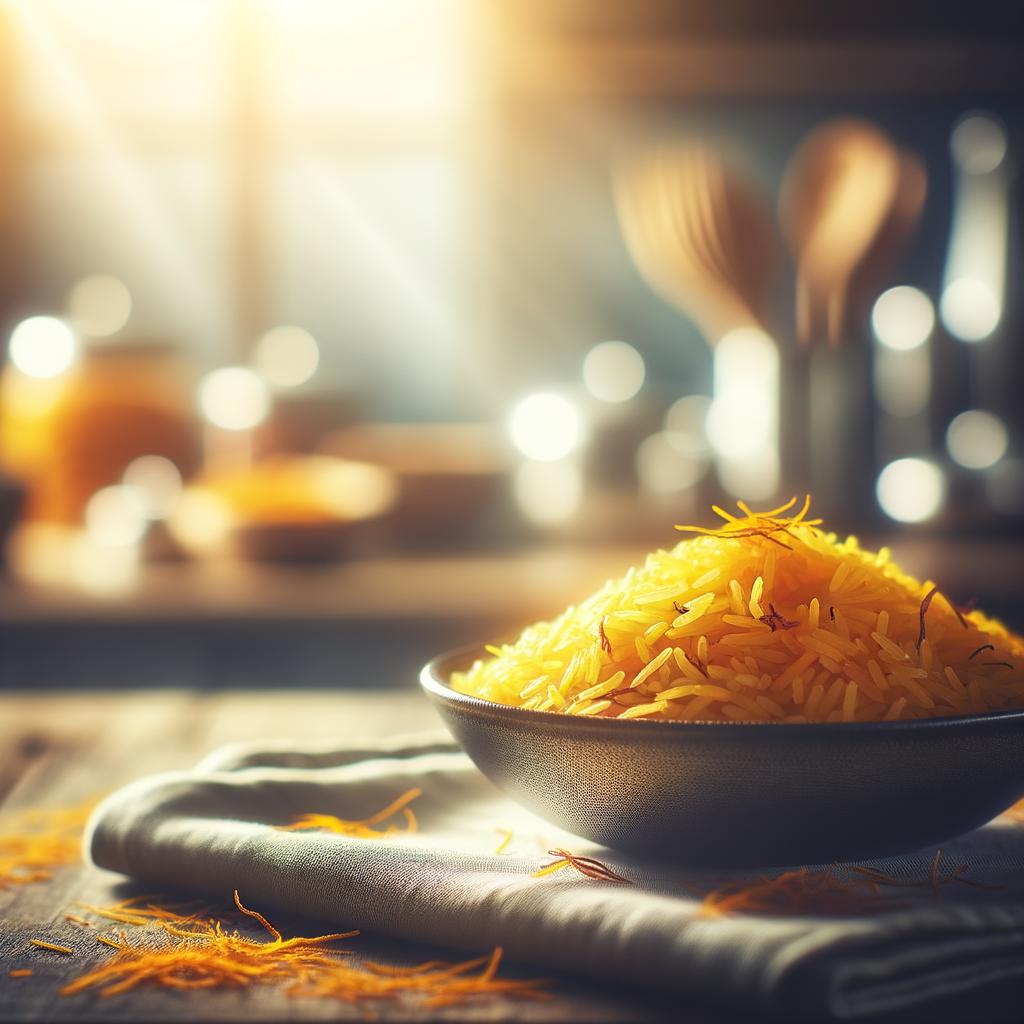Saffron Rice

Description
Saffron Rice, a golden jewel in the culinary world, is an enchanting ingredient that is as rich in color as it is in flavor. It is a visually stunning dish, with the rice grains taking on a warm, golden hue from the saffron. The texture is fluffy and light, each grain distinct, yet melding harmoniously with the others. The flavor profile is complex, with the saffron imparting an earthy sweetness that is both subtle and powerful, a hint of floral notes, and a slightly bitter undertone. What sets saffron rice apart from other rice dishes is the use of saffron, one of the world's most expensive spices, derived from the flower of Crocus sativus, commonly known as the "saffron crocus."
Primary Uses
Saffron Rice is a cornerstone ingredient in many cuisines, particularly in Middle Eastern, Indian, and Spanish cooking. It is a key component of the famous Spanish dish, paella, where it lends its distinct color and flavor to the medley of rice, seafood, and spices. In Indian cuisine, it is often used in biryanis and pilafs, adding a luxurious touch to these hearty dishes. Beyond its culinary uses, saffron has been used in traditional medicine for its potential health benefits, and it holds a special place in various cultures due to its cost and rarity.
History
The history of Saffron Rice is as colorful as the dish itself. Saffron has been used as a spice and coloring agent for over 3,000 years, with its use dating back to the ancient civilizations of Greece, Persia, and Rome. The process of harvesting saffron is labor-intensive, which has contributed to its high cost and its status as a luxury item. Over time, the use of saffron has spread around the world, with saffron rice becoming a beloved dish in many cultures. There are stories of traders traveling long distances to procure this precious spice, and of royals indulging in saffron rice as a sign of opulence.
Nutritional Information
Saffron Rice is not just a feast for the eyes and palate, but it also holds nutritional value. Rice is a good source of energy, providing carbohydrates, and it also contains small amounts of protein and fiber. Saffron, on the other hand, is rich in various vitamins such as Vitamin C and minerals like magnesium and iron. It also contains carotenoids, which are powerful antioxidants. While saffron rice is generally healthy, it should be consumed in moderation due to its high carbohydrate content. Compared to plain rice, saffron rice offers more in terms of flavor and nutritional benefits, making it a worthwhile indulgence.

